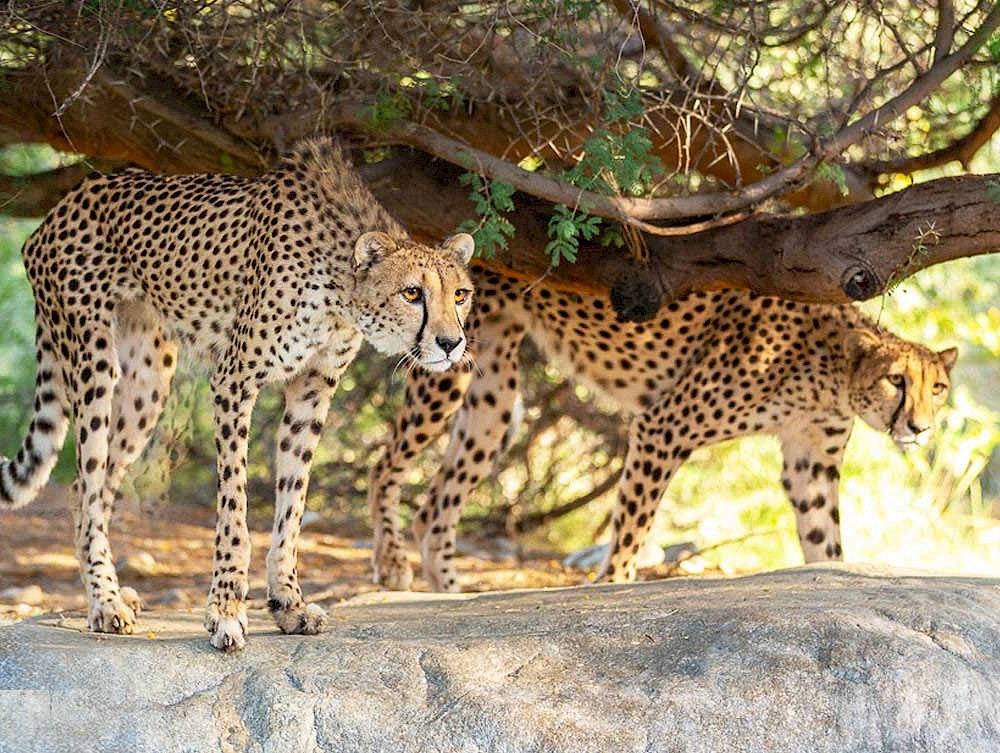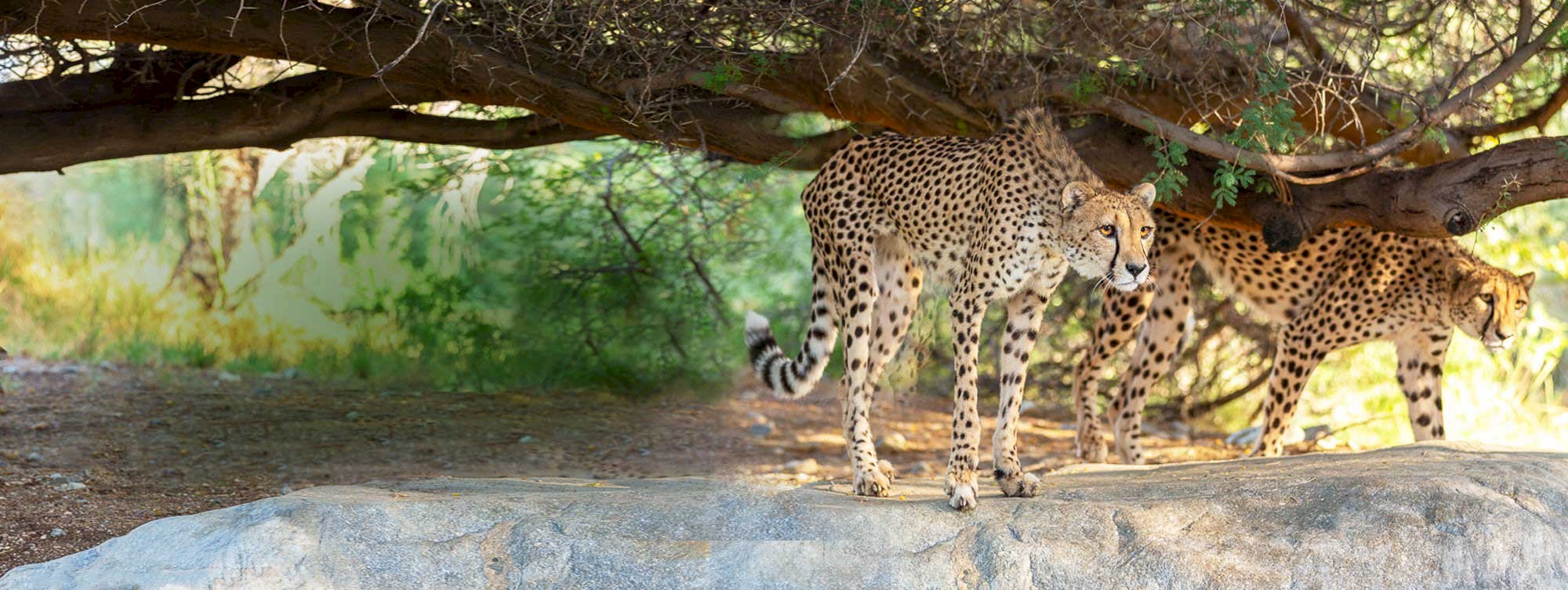The Sixth Extinction - Endangered Species Day
May 17, 2021
This Friday, May 21st, is Endangered Species Day! Currently, the rate at which species are going extinct is 10,000 times greater than it was prior to the 1880s. The Living Desert works to conserve threatened and endangered species around the world, however, we are stronger with a larger community. That means you! The good news is you don’t have to be a millionaire or a biologist to help endangered species. Any person can make a difference, and every action helps.
A few species that showcase beneficial joint conservation efforts are the Arabian oryx, Mexican wolf, and black rhino. All three species were almost driven to extinction by hunting and habitat loss. Due to breeding programs, however, the Arabian oryx was the first mammal to have gone extinct and then been delisted. Careful management of these species allows zoos and other organizations worldwide to supplement wild populations, ensure genetic diversity, and protect habitats from continued encroachment. These species are becoming increasingly stable in the wild but still require diligent oversight! We asked members of our knowledgeably diverse team how everyone can help save endangered species.
“You can aid Mexican wolves by supporting organizations that manage wild populations through breeding and reintroduction programs.” Sarah Greely, Senior Conservation Biologist
“You can help the black rhinoceros by steering clear of rhino horn products for which they are frequently poached and practicing sustainable, low-impact land use.” Jared Moeller, Animal Care Curator
There are still many other species around the world that need our help! The Living Desert works with partners in African deserts, from Cheetah in Botswana and Namibia to African painted dogs in Zimbabwe to Grevy’s zebra in Kenya to Masai giraffes in Tanzania, to create more success stories.
“You can decrease demand for illegal trafficking of cheetahs, often taken from the wild as cubs, by refraining from interacting with social media posts that have an exotic animal living in a household or as a pet.” Christine Montgomery, Animal Care Curator
“You can save Masai giraffes from starvation due to deforestation by promoting the planting of native trees.” Justin Carmichael, Curator of Volunteer Programs
“You can protect Grevy’s zebras by promoting sustainable livestock practices, which, when not managed properly, often lead to native species being out-competed for limited resources.” Bekki Lorton, Animal Care Supervisor
Although many charismatic, endangered and threatened species reside overseas, The Living Desert devotes resources to the conservation of species right here in Southern California. We encourage everyone to give us a hand!
“You can re-establish peninsular pronghorn populations by conserving water that can, in turn, allow their native ecosystems to be restored.” JJ Leissing, Director of Education
“You can help restore the desert tortoise population by covering your trash cans to reduce food resources for the common raven, whose unnaturally high level of predation is the greatest threat to tortoise survival.” Alex Ocañas, Conservation Social Scientist
One uniting factor among threatened species is loss of habitats. As humans encroach further into dwindling wildlife habitat, animals are forced into drastic competition for existence. All animals depend on having enough space with ample resources to survive. The Living Desert’s Garden Department supports diverse species with vital food and habitat by propagating native plants.
“You can discourage OHV use to save the Riverside County endemic Mecca aster whose populations are increasingly threatened by habitat degradation.” Gilbert Ochoa, Collections Gardener
“You can purchase barrel cactus and other succulents from reputable sources to relieve the pressure of poaching on wild plants.” Mark Reeder, Collections Gardener
“You can discontinue the use of herbicides that suppress the growth of monarch caterpillars' only food source, milkweed.” Mack Nash, Garden Collections Supervisor
We all have a part to play in conserving threatened and endangered animals. Help us restore deserts around the globe by being proactive! Come visit The Living Desert where you can learn more about other species who call Earth home.
Did You Know...
- Located behind scenes in the Desert Carnivore Conservation Center, we conduct research and supplemental breeding of threatened carnivores. One such species is the smallest African feline, the black-footed cat. “This fierce predator is considered a serious threat to small livestock which has led people to trap and poison them,” says Animal Care Curator, Heather Down. Often, smaller carnivores that play crucial roles in rodent management are overlooked for larger cats, but these vital species need support too!
- “We have always espoused the virtues of using native plants in local landscapes to support indigenous fauna,” Kirk Anderson, Curator of Gardens, affirms. Many of our native plants, including honey mesquite, California buckwheat, and mallow, host various butterfly species while jojoba, or goatnut, is revered by bighorn sheep. Anderson continues, “We propagate members of the Family Asteraceae that produce seeds coveted by a variety of birds including sparrows, finches, doves, and quail.”
- The Living Desert has been conducting conservation work near the Salton Sea for the only Southern California native fish, the desert pupfish. This little but hardy fish is threatened by tamarisk trees, also known as salt cedar, overshade the creek and each tree can use up to 200 gallons of water a day! Removing these invasive trees and replanting natives, like iodine bush, can restore the ecosystem and lend a fin to the pupfish.









